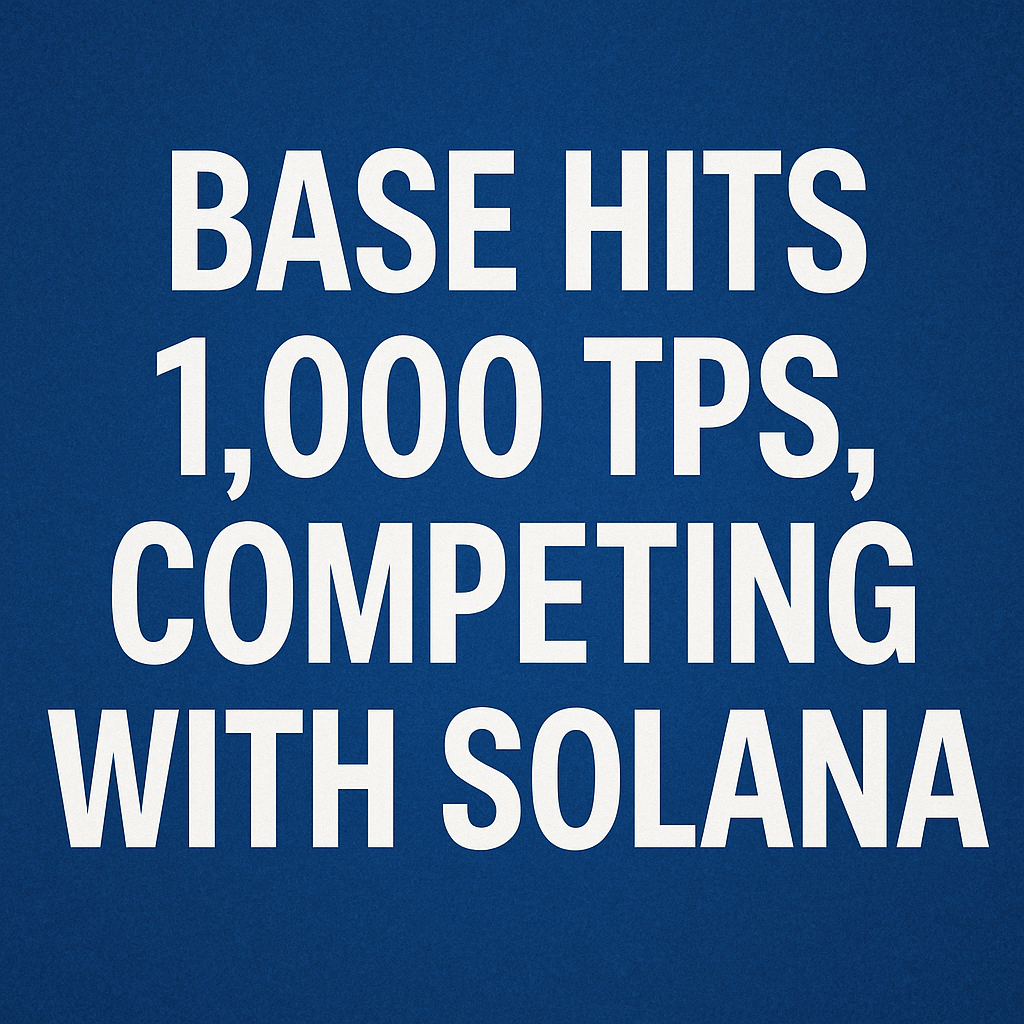Base Hits 1,000 TPS, Competing with Solana

Coinbase’s layer-2 blockchain Base recorded a brief spike approaching 1,000 transactions per second (TPS) during the recent Virtuals AI platform token launch. This milestone thrust Base into direct competition with Solana’s throughput, sparking fresh debate on network scalability and layer-2 adoption.
Transaction Surge and Network Metrics
On December 1, Base handled a peak of approximately 980 TPS over a 30-second interval—up from its average rate of around 200–300 TPS. Key metrics during the event:
- Peak Throughput: ~980 TPS
- Average Block Time: 1.25 seconds
- Average Gas Fee: 0.08 gwei
- Data Availability Latency: 500–600 ms
This spike was triggered by a high-volume token distribution on Virtuals AI, illustrating Base’s ability to absorb bursty traffic without compromising consensus finality.
Technical Architecture of Base
Consensus and Sequencing
Base employs an Optimistic Rollup design on top of Ethereum, batching multiple user transactions off-chain and submitting compressed data proofs on the mainnet. Key components include:
- Layer-2 Sequencer: Aggregates transactions into blocks, ordering them before posting a state root.
- Fraud Proof Window: A 7-day period during which any participant can challenge the block validity.
- Rollup Contract: Manages deposits, withdrawals, and dispute resolution on Ethereum.
Data Availability Strategies
Base currently uses Ethereum’s on-chain data availability but is evaluating off-chain alternatives like Celestia’s DA layer. This shift could reduce calldata costs by up to 60% and further improve TPS.
Comparative Performance Analysis
Solana vs Base: Throughput and Latency
Solana’s native architecture—with Proof of History (PoH) and Tower BFT—routinely posts 2,000–3,000 TPS in high-performance environments. However, the trade-off is higher hardware requirements and occasional network hiccups during load spikes. Base’s Optimistic Rollup model offers:
- Lower on-chain fees when batched
- Leverage of Ethereum security guarantees
- Modular upgrade path for consensus and DA layers
Although Base’s current maximum TPS is lower than Solana’s peak, its on-chain settlement finality and compatibility with Ethereum tooling make it a compelling option for DeFi projects.
Implications for DeFi and dApps
By achieving near-Solana speeds, Base can attract liquidity and decentralized application developers seeking both throughput and robust security. Key use cases include:
- Automated Market Makers (AMMs): High-frequency trading and arbitrage bots benefit from sub-second settlement.
- NFT Marketplaces: Fast minting and batch transfers reduce user friction.
- On-Chain Gaming: Real-time asset updates and lower gas costs.
“Base’s performance under load shows that layer-2 rollups can meet emerging dApp requirements while leveraging Ethereum’s security,” says Dr. Priya Singh, blockchain researcher at the Blockchain Performance Lab.
Outlook and Future Upgrades
Base’s roadmap includes:
- Integration with zk-rollup proofs to reduce challenge windows from days to minutes
- Support for EIP-4844 (Proto-Danksharding) to slash calldata costs
- Interoperability bridges with other layer-2 networks for asset portability
Collectively, these upgrades could push sustainable TPS above 1,500 while maintaining sub-0.1-second block times. As the ecosystem matures, Base stands to become a top contender in the high-throughput DeFi and Web3 sectors.